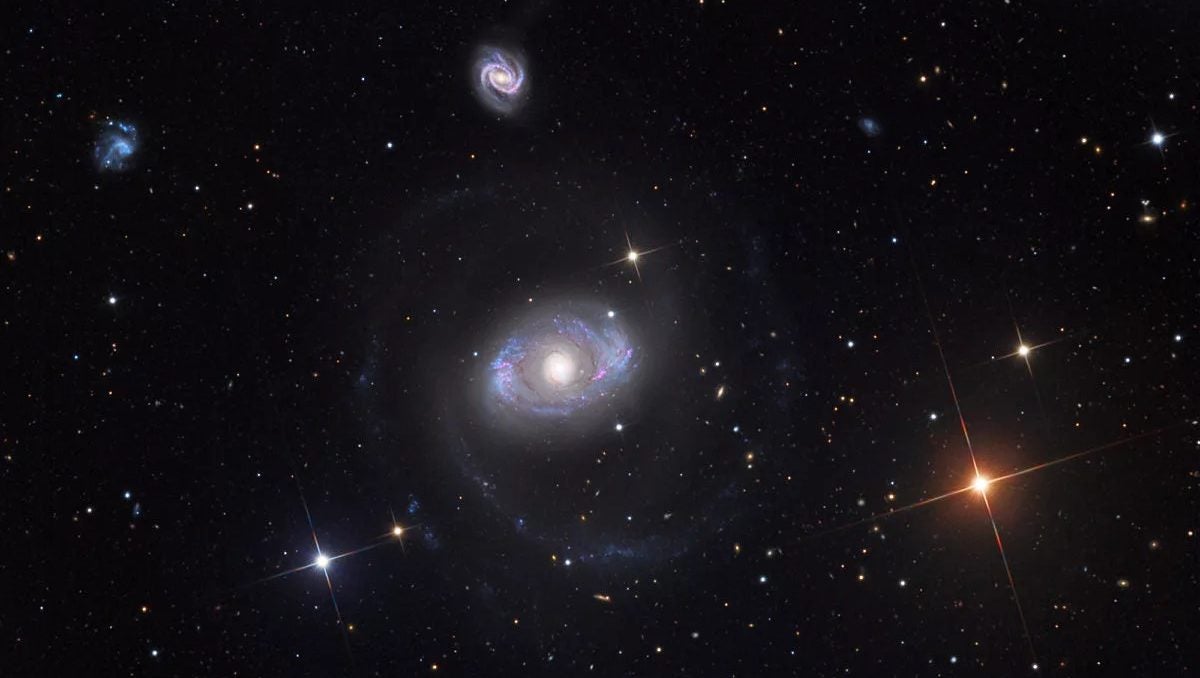
NGC 4151 is an intriguing spiral galaxy, discovered by William Herschel in 1787. Modern images show an intense central core surrounded by an oval ring of stars, dust, and gas. Red splotches throughout the spiral arms display an array of emission nebulae, while blue regions mark concentrations of newly formed stars. Studying its spiral structure gives hints of a central bar, which has led astronomers to classify it as an SAB intermediate spiral, between barred and unbarred spirals.
American astronomer Carl Seyfert was the first to realize that NGC 4151’s center was unusual. His landmark research led to this galaxy and others like it being known as Seyfert galaxies. Seyfert galaxies contain actively growing supermassive black holes buried in their cores. In a sense, they are the missing link between quasars and relatively dormant galactic black holes, like our Milky Way’s.
At roughly 52 million light-years away, NGC 4151 is one of the closest galaxies with an active galactic nucleus, allowing it to be studied in greater detail. In 1970, the Uhuru X-ray observatory satellite detected X-ray emissions originating from NGC 4151, evidence of a central black hole. Four decades later, the Chandra X-ray Observatory obtained data suggesting that these emissions are likely caused by an outburst fueled by the supermassive black hole, while material swirls around it in an accretion disk.
Combining images of its core taken at visible, radio, and X-ray wavelengths gives NGC 4151 a supernatural appearance, and the nickname Eye of Sauron (from The Lord of the Rings).









